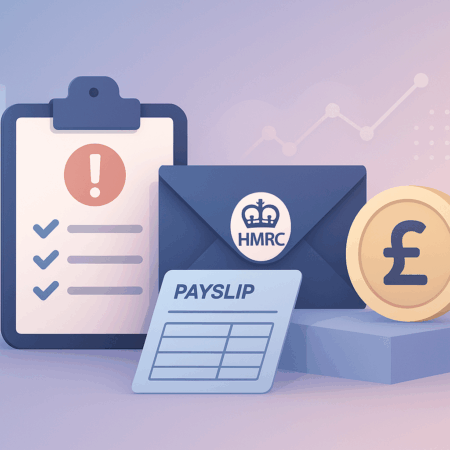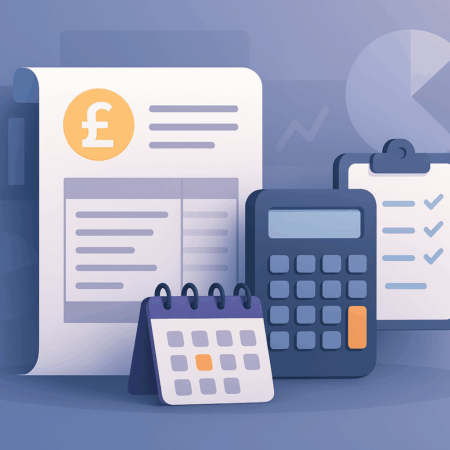If you’ve ever sold a property, shares, or another valuable asset in the UK, you’ve likely come across the term Capital Gains Tax (CGT). It’s the tax you pay on the profit (or “gain”) you make when disposing of an asset that’s increased in value. Whether you’re a buy-to-let landlord, a stock market dabbler, or someone selling a second home, understanding CGT is crucial to avoid unexpected tax bills. In this guide, we’ll explore what CGT is, how it applies in the 2025/26 tax year, and how a UK CGT calculator can simplify your financial planning. Plus, I’ll walk you through real-world examples to make the numbers crystal clear.
What Is Capital Gains Tax (CGT)?
Capital Gains Tax is levied on the profit you make when you sell or “dispose” of an asset that has risen in value. Disposal isn’t just selling—it can mean gifting an asset, transferring it to someone else, or even swapping it for something else. In the UK, CGT applies to assets like:
- Property (second homes, buy-to-let properties, or land, but not your main residence, thanks to Private Residence Relief).
- Shares (outside tax-free wrappers like ISAs).
- Valuable personal items (e.g., jewellery, antiques, or cars worth over £6,000).
- Business assets (if you’re selling part or all of a business).
The tax is only on the gain—the difference between what you paid for the asset and what you sold it for, minus allowable expenses. For the 2025/26 tax year, every individual gets a tax-free allowance of £3,000 (the Annual Exempt Amount, or AEA). Any gains above this are taxed at rates depending on your income and the type of asset.
Why Use a UK CGT Calculator?
Calculating CGT manually can feel like untangling a ball of yarn after a cat’s had a go at it. You need to factor in purchase costs, selling costs, improvements, your income tax band, and any reliefs or exemptions. A UK CGT calculator takes the headache out of the process by doing the heavy lifting for you. Just plug in details like:
- Purchase price of the asset.
- Sale price (or market value if gifted).
- Costs associated with buying and selling (e.g., legal fees, estate agent fees).
- Improvement costs (e.g., building an extension).
- Your annual income (to determine your tax band).
The calculator spits out an estimate of your CGT liability, helping you plan your finances or decide whether to sell an asset now or later. It’s especially handy for property sales, where higher CGT rates apply, and reporting deadlines are tight (more on that later).
CGT Rates and Allowances for 2025/26
Before we dive into examples, let’s get the basics straight. For the 2025/26 tax year:
- Annual Exempt Amount (AEA): £3,000 per individual. If you don’t use it, you can’t carry it forward.
- CGT Rates:
- Basic-rate taxpayers (income up to £50,270): 18% on all assets, including property.
- Higher/additional-rate taxpayers (income above £50,270): 24% on all assets, including property.
- Reporting Deadlines:
- For residential property sales, report and pay CGT within 60 days of completion.
- For other assets, report via your Self-Assessment tax return by 31 January following the tax year (e.g., 31 January 2027 for 2025/26 gains).
Note: These rates and allowances are accurate as of July 2025, based on HMRC guidance. Always check with a tax professional for your specific circumstances.
How to Calculate CGT: A Step-by-Step Example
Let’s walk through a real-world scenario to show how a UK CGT calculator works. Meet Emma, a 40-year-old marketing manager from Bristol who sold her buy-to-let flat in June 2025.
Scenario: Emma’s Buy-to-Let Sale
- Purchase Price (2015): £200,000
- Sale Price (June 2025): £300,000
- Buying Costs: £3,000 (legal fees + stamp duty)
- Selling Costs: £5,000 (estate agent + legal fees)
- Improvement Costs: £10,000 (new kitchen installed in 2018)
- Emma’s Income (2025/26): £45,000 (basic-rate taxpayer)
- Other Gains: None this tax year
Step 1: Calculate the Gain
The gain is the sale price minus the purchase price and allowable costs:
[ \text{Gain} = \text{Sale Price} – (\text{Purchase Price} + \text{Buying Costs} + \text{Selling Costs} + \text{Improvement Costs}) ]
[ \text{Gain} = £300,000 – (£200,000 + £3,000 + £5,000 + £10,000) = £300,000 – £218,000 = £82,000 ]
Emma’s gain is £82,000.
Step 2: Apply the Annual Exempt Amount (AEA)
Emma’s AEA for 2025/26 is £3,000, so we subtract this from her gain:
[ \text{Taxable Gain} = £82,000 – £3,000 = £79,000 ]
Step 3: Determine the CGT Rate
Emma’s income is £45,000, which is within the basic-rate tax band (£50,270 threshold). However, we need to check if her gain pushes her into the higher-rate band. Add the taxable gain to her income:
[ £45,000 + £79,000 = £124,000 ]
The higher-rate threshold is £50,270, so part of her gain falls in the basic-rate band, and the rest in the higher-rate band:
- Basic-rate band available: £50,270 – £45,000 = £5,270
- Basic-rate CGT: £5,270 × 18% = £948.60
- Higher-rate CGT: (£79,000 – £5,270) × 24% = £73,730 × 24% = £17,695.20
- Total CGT: £948.60 + £17,695.20 = £18,643.80
Step 4: Report and Pay
Since this is a residential property, Emma must report the sale to HMRC and pay the £18,643.80 within 60 days of completion (by August 2025). She can use HMRC’s online service or a CGT calculator to streamline this.
A UK CGT calculator would automate these steps, letting Emma input her numbers and get an instant estimate. She could also explore reliefs (e.g., Private Residence Relief if she lived in the flat previously) to reduce her bill, but she’d need to consult a tax advisor for that.
Tips to Reduce Your CGT Liability
Nobody likes a hefty tax bill, so here are some strategies to lower your CGT, based on HMRC rules and expert advice:
- Use Your Annual Allowance: Make sure you use your £3,000 AEA each year. If you’re married or in a civil partnership, transfer assets to your spouse to use their allowance too (transfers between spouses are usually tax-free).
- Offset Losses: If you’ve sold an asset at a loss, you can deduct it from your gains in the same tax year or carry it forward to future years.
- Invest in ISAs or SIPPs: Assets in Stocks and Shares ISAs or Self-Invested Personal Pensions grow free of CGT. Moving investments into these can shield future gains, though selling to fund the transfer may trigger CGT.
- Claim Reliefs: If you’ve lived in the property, you may qualify for partial Private Residence Relief. Business owners might benefit from Business Asset Disposal Relief (formerly Entrepreneurs’ Relief).
- Time Your Sales: Spreading disposals over multiple tax years can keep your gains within the AEA or basic-rate band.
Always speak to a qualified accountant before making big moves, as tax rules are as changeable as British weather.
Common Mistakes to Avoid
I’ve seen friends and clients trip up on CGT, so here’s what not to do:
- Missing Deadlines: For property, the 60-day reporting rule is strict. Miss it, and you could face penalties.
- Forgetting Costs: Don’t overlook deductible expenses like improvement costs or legal fees—they can significantly reduce your gain.
- Ignoring Income Impact: Your gains are added to your income, which can push you into a higher tax band. Plan ahead with a CGT calculator.
- Assuming Your Main Home Is Exempt: If you’ve let out your home or used it for business, you might owe CGT on part of the gain.
Why Choose a Reliable UK CGT Calculator?
Not all CGT calculators are created equal. Look for one that:
- Is updated for the 2025/26 tax year (check for the £3,000 AEA and 18%/24% rates).
- Handles both property and other assets.
- Lets you input detailed costs (buying, selling, improvements).
- Accounts for your income to calculate the correct tax band.
- Offers guidance on reliefs or next steps.
Reputable calculators from sites like HMRC, TaxScouts, or UK Property Accountants are a good bet.
Navigating Capital Gains Tax doesn’t have to feel like solving a Rubik’s Cube blindfolded. A UK CGT calculator is your trusty sidekick, helping you estimate your tax bill and make informed decisions about selling assets. Whether you’re selling a buy-to-let in Bristol or shares in a tech startup, understanding your CGT liability empowers you to keep more of your hard-earned money.
Got a property sale on the horizon? Plug your numbers into a CGT calculator today, and if the numbers look daunting, reach out to a tax advisor. After all, a little planning now can save you a lot of stress (and cash) later.
Have you used a CGT calculator before? Share your tips or questions in the comments below!









